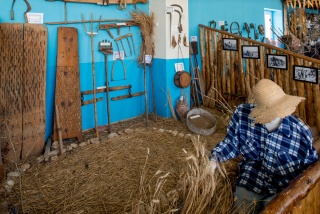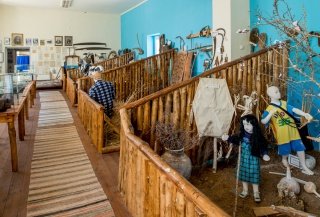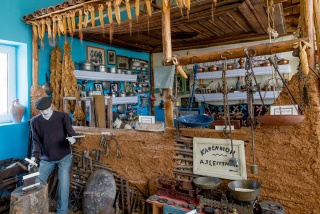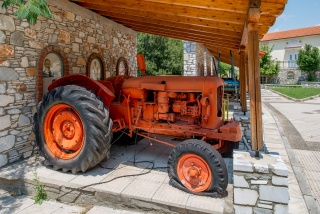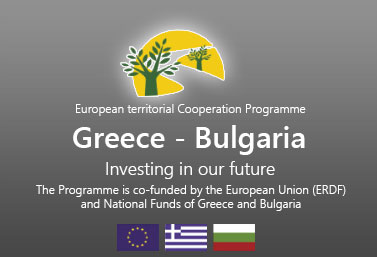Traveler's Guide
East Macedonia & Thrace
Folklore Museum of Ptelea

Underground space of school: Representation vision of St John, known as Apocalypse futures to happen to humanity. Interior: 1.In two antechambers of the entrance to the museum is presented with photographs and objects, the fight for survival and daily life of refugees before and after installation in Greece. Costumes, Apparel (Pontian, Anatolian Greeks, Thracians) customs, social and historical moments social development, education, occupations, ceremonies. 2. Representation in houses of traditional professions (carpenter, samara, shoemaker, beekeeper). a) farmer plowing with his horse, utensils and tools used. b) Farmer with scythe that reaps, fagots, tourgkana, Catal, millstones, sieve, hauling. c) The games of children of refugees: slingshots, bow, eagle, wire service, trochouli, tsilik, rotor, bearings. d) The blacksmith with anvil, the brazier, the torch and metal constructions. e) The refugee house built with fine wood (slats), stones and plaster soil with straw. The main room (ontas) where the family lived. f) The tool of the family for clothes and rugs. g) The displays of tools, bells, musical instruments, agricultural and other tools, educational institutions etc.) What"s left of teaching materials of Primary School of Ptelea, built by the first generation refugees in the early years of establishment. Exposed bags, books, desks, arithmetic geometry and geography instruments.
Address
No information available.Contact Information
No information available.
- Folklore Museum of Ptelea

